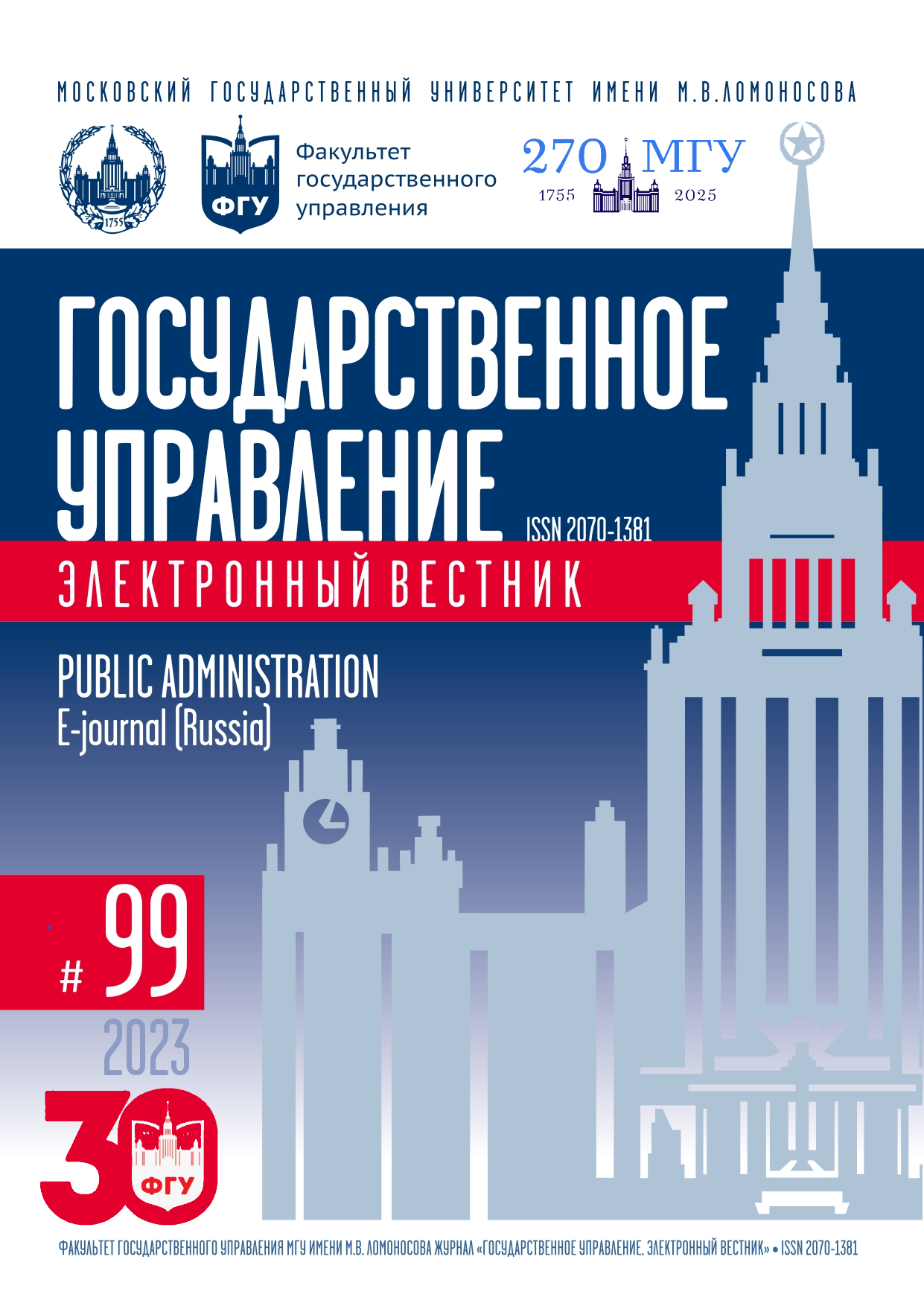New Structure and Functions of State Sector in Russia in Face of Global Challenges
Keywords:
Public sector, state property, state-owned companies, privatization, import substitutionAbstract
In the face of global challenges, attention to the problems of the public sector, its structure and functions is increasing. For the successful implementation of the tasks facing it, qualitative transformations within the public sector are necessary, increasing its flexibility and efficiency in a market economy. The aim of this article is to study the dynamics and modern structure of the Russian public sector, as well as to identify the directions of qualitative transformations and new functions of the public sector in the period of global turbulence. The paper presents an analysis of extensive statistical data for the period from 2017 to 2023, confirming the presence of both quantitative and qualitative changes in the public sector of the Russian Federation. The study revealed that over the past six years, the public sector in Russia has decreased by about 47% in terms of the number of commercial enterprises. At the same time, the optimization of the structure of the public sector occurs due to the abolition or sale of small enterprises, as well as the transformation of outdated and inefficient unitary enterprises into modern market forms of joint-stock companies. It was also proved that the state retains control over the largest strategic assets and concentrates economic power within vertically integrated structures in order to ensure national and economic security. The supernova realities have led to the expansion of the functions of the public sector, which, in addition to its main responsibilities, has acquired additional ones, such as financing innovations for import substitution; benchmarking in switching to Russian solutions in business; temporary management of foreign assets; development of the sharing economy, provision of technological transfer between industries; cooperation with the flagships of Russian business; restraining of key personnel relocation. Qualitative transformations of the public sector, including improving the indicators of financial and economic activity of state-owned companies, getting rid of inefficient forms of state entrepreneurship, the use of innovative tools and business processes, the development of new mechanisms of public-private partnership, indicate positive changes in the direction of the implementation of the tasks facing it.
References
Дементьев В.Е. Государственные корпорации и структурные сдвиги в экономике // Управление. 2016. № 3. С. 12–18. DOI: 10.12737/21291
Клейнер Г., Петросян Д., Беченов А. Еще раз о роли государства и государственного сектора в экономике // Вопросы экономики. 2004. № 4. С. 25–41. DOI: 10.32609/0042-8736-2004-4-25-41
Козлова С.В., Братченко С.А. Совершенствование системы управления государственной собственностью: уроки прошлого и направления развития // Российский экономический журнал. 2018. № 4. С. 56–68.
Кононкова Н.П., Михайленко Д.А. «Антикризисная» приватизация в контексте общемировых закономерностей развития государственной собственности // Российский экономический журнал. 2017. № 6. С. 39–53.
Кононкова Н.П., Михайленко Д.А. Государственная собственность как фактор минимизации рисков и неопределенности в экономике совместного потребления // Международная ежегодная научная конференция Ломоносовские чтения-2022. Секция экономических наук. «Наука и искусство экономической политики в кризисных условиях» Сборник лучших докладов. М.: Экономический
факультет МГУ имени М.В. Ломоносова. 2023. С. 174–179.
Радыгин А. Россия в 2000–2004 годах: на пути к государственному капитализму? // Вопросы экономики. 2004. № 4. С. 42–65. DOI: 10.32609/0042-8736-2004-4-42-65
Радыгин А.Д., Энтов Р.М., Абрамов А.Е., Аксенов И.В., Мальгинов Г.Н., Чернова М.И. «Большая неохотная приватизация»: противоречивые подходы в условиях санкций // Вопросы экономики. 2018. № 8. С. 5–38. DOI: 10.32609/0042-8736-2018-8-5-38
Цифровая трансформация экономики: государство, бизнес, общество: коллективная монография / под ред. Н.П. Кононковой. М.: ТЕИС, 2019.
Benoit S., Wang Y., Teng L., Hampson D., Li X. Innovation in the Sharing Economy: A Framework and Future Research Agenda // Journal of Business Research. 2022. Vol. 149. P. 207–216. DOI: 10.1016/j.jbusres.2022.05.020
Gorog G. The Definitions of Sharing Economy: A Systematic Literature Review // Management. 2018. Vol. 13. Is. 2. P. 175–189. DOI: 10.26493/1854-4231.13.175-189
Paik Y., Kang S., Seamans R. Entrepreneurship, Innovation and Political Competition: How the Public Sector Helps the Sharing Economy Create Value // Strategic Management Journal. 2019. Vol. 40. Is. 4. P. 503–532. DOI: 10.1002/smj.2937

